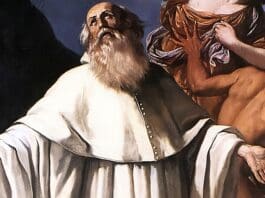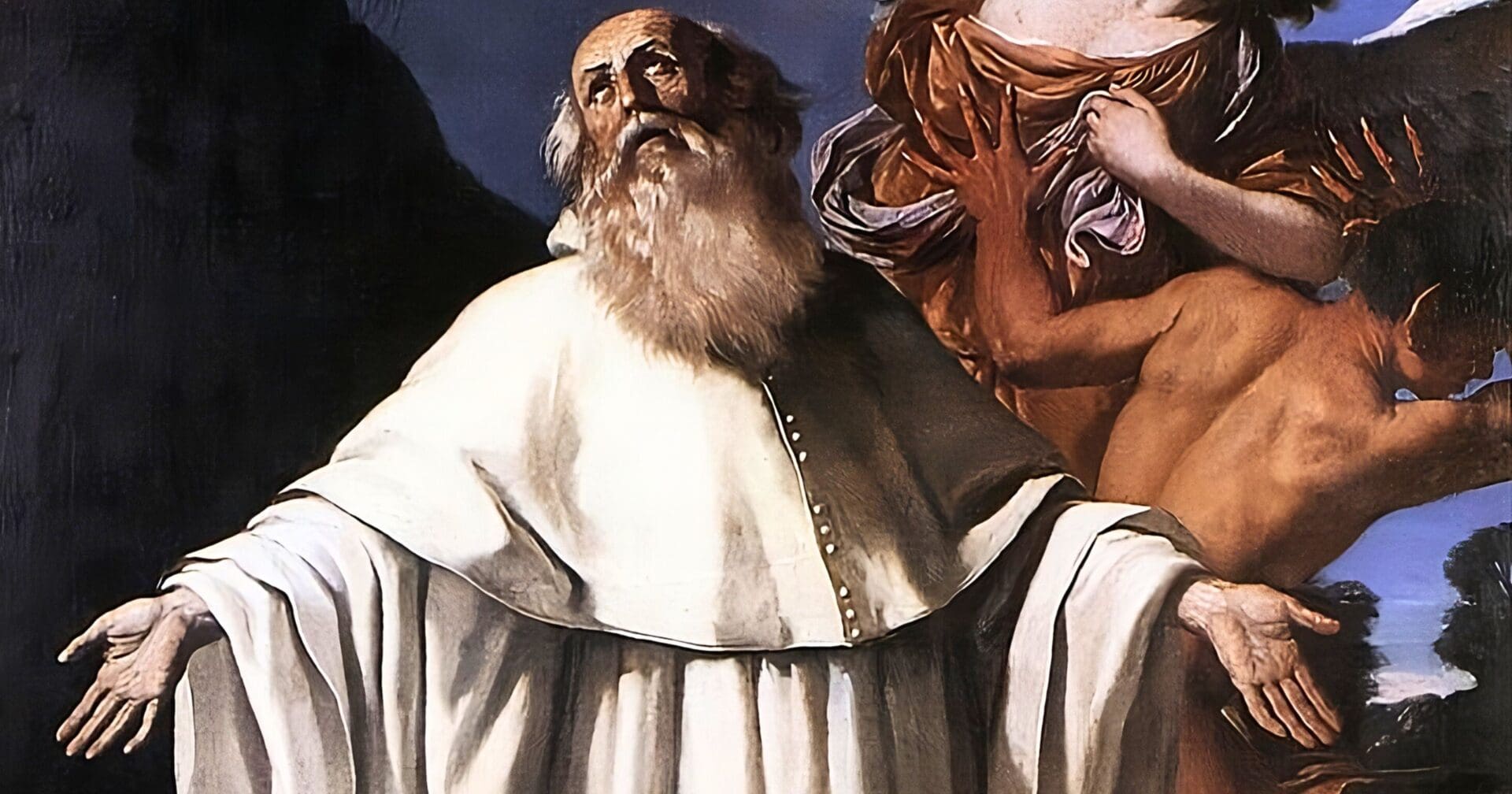
In the tenth century Sergius, a nobleman of Ravenna, quarreled with a relative over an estate and, in a duel to which his son Saint Romuald was witness, slew him. The young man of twenty years was horrified at his father’s crime, and entered a Benedictine monastery at Classe to do a forty days’ penance for him. This penance led to his entry into religion as a Benedictine monk.
After seven years at Classe, Romuald went to live as a hermit near Venice, under the guidance of a holy man who had him recite the Psalter from memory every day. When he stumbled, the hermit struck his left ear with a rod. Romuald suffered with patience, but one day, noting that he was losing his hearing in that ear, asked the old man to strike him on his right ear. This episode supposes great progress in virtue. The two religious were joined by Peter Urseolus, Duke of Venice, who desired to do penance also, and together they led a most austere life in the midst of assaults from the evil spirits.
Saint Romuald, whose aim was to restore the primitive rule to the Order of Saint Benedict, succeeded in founding some hundred monasteries in both Italy and France, and he filled the solitudes with hermitages. The principal monastery was that at Camaldoli, a wild, deserted region, where he built a church, surrounded by a number of separate cells for the solitaries who lived under his rule; his disciples were thus called Camaldolese. For five years the fervent founder was tormented by furious attacks by the demon. He repulsed him, saying, “O enemy! Driven out of heaven, you come to the desert? Depart, ugly serpent, already you have what is due you.” And the shamed adversary would leave him. Saint Romuald’s father, Sergius, was moved by the examples of his son, and entered religion near Ravenna; there he, too, was attacked by hell and thought of abandoning his design. Romuald went to visit him; he showed him the error of the devil’s ruses, and his father died in the monastery, in the odor of sanctity.
Among his first disciples were Saints Adalbert and Boniface, apostles of Russia, and Saints John and Benedict of Poland, martyrs for the faith. He was an intimate friend of the Emperor Saint Henry, and was reverenced and consulted by many great men of his time. He once passed seven years in solitude and total silence. He died, as he had foretold twenty years in advance, alone in his monastery of Val Castro, on the 19th of June, 1027, in an advanced and abundantly fruitful old age.
By the life of Saint Romuald, we see how God brings good out of evil. In his youth Saint Romuald was much troubled by temptations of the flesh; to escape them he had recourse to hunting, and it was in the woods that he first conceived his love for solitude. His father’s sin prompted him to undertake a forty days’ penance in the monastery, which he then made his permanent home. Some bad examples of his fellow-monks induced him to leave them and adopt the solitary mode of life; the repentance of a Venetian Duke brought him his first disciple. The temptations of the devil compelled him to lead his severe life of expiation; and finally, the persecutions of others were the occasion of his settlement at Camaldoli, mother house of his Order.
Photo credit: Public Domain via Wikimedia Commons
The post Saint Romuald appeared first on uCatholic.
Daily Reading
Thursday of the Thirty-second Week in Ordinary Time
Reading 1 PHMN 7-20 Beloved: I have experienced much joy and encouragement from your love, because the hearts of the holy ones have been refreshed by you, brother. Therefore, although…
Daily Meditation
The Kingdom of God
Click here for daily readings While I am content to live in a time with indoor plumbing, cell phones, and other modern conveniences, I still think it would have been…




